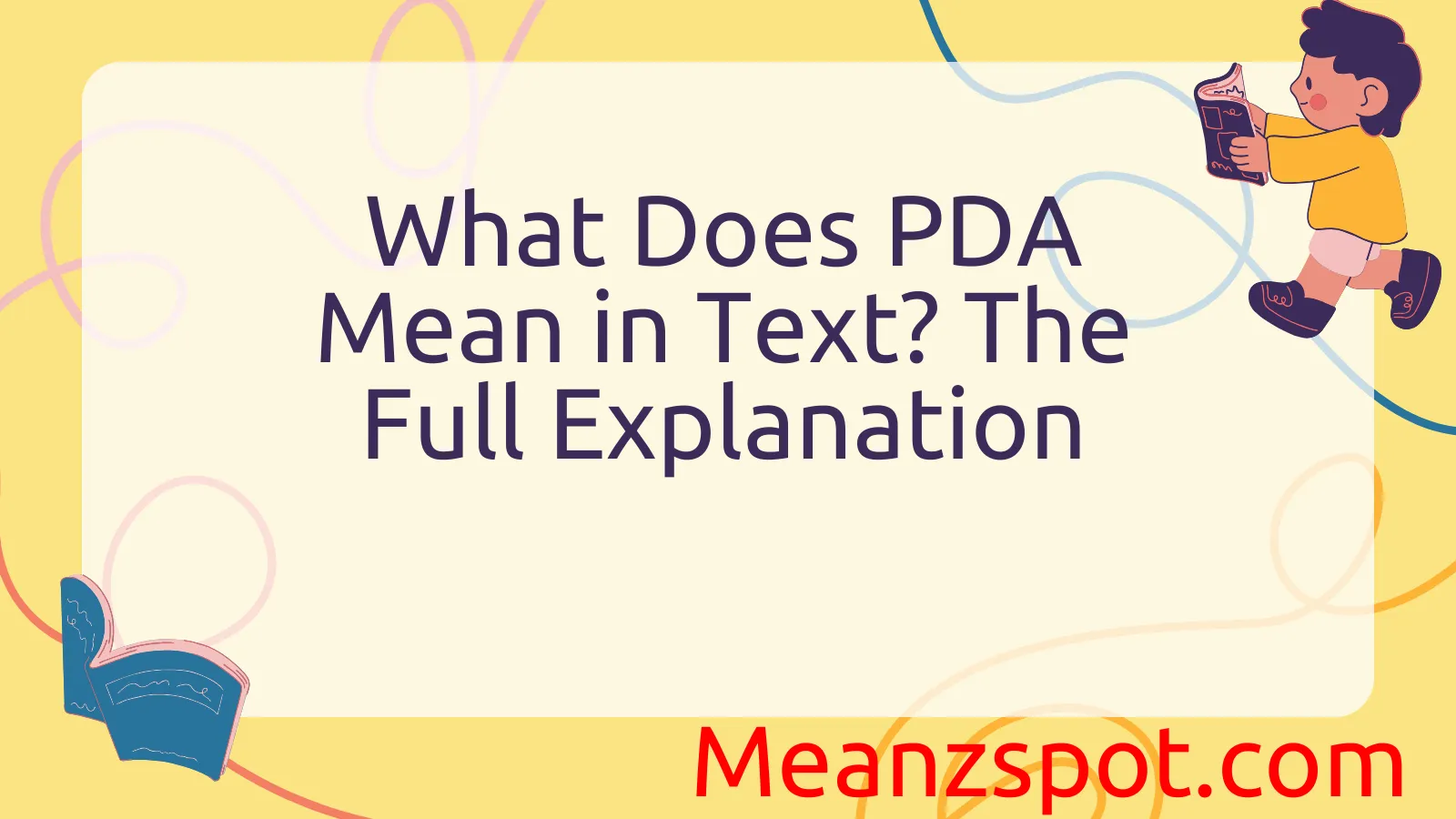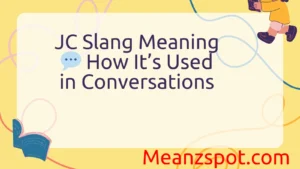In today’s fast-paced digital world, acronyms and abbreviations are everywhere, and one term you might have come across is PDA. If you’ve seen it in texts, social media posts, or online chats and wondered what it really means, you’re not alone. PDA isn’t just random letters—it’s a slang term that can reveal a lot about relationships, feelings, and social interactions.
From Instagram captions showing couples to group chat messages joking about public displays, understanding PDA in text will help you decode conversations, avoid misunderstandings, and even use it correctly yourself. In this article, we’ll break down what PDA means in texting, how it’s used, examples in real conversations, and the cultural context behind it so you’ll never be confused again.
Definitions & Meaning
PDA stands for Public Display of Affection. It refers to physical expressions of love or affection shown openly in public places. This can include holding hands, hugging, kissing, or any affectionate gesture that others can see. The idea behind PDA is that these actions are visible and done openly rather than privately.
For example, if a couple is holding hands while walking down the street or sharing a quick kiss in a park, that’s considered PDA. It’s a common way for people to express their feelings for each other, but the level of PDA that’s acceptable varies widely depending on cultural norms, social settings, and personal comfort levels.
In texting, when someone mentions PDA, they usually talk about the extent to which people show affection publicly or question whether it’s appropriate. It can sometimes carry a tone of approval, disapproval, or playful teasing depending on the conversation.
Origins & History
The term Public Display of Affection likely originated as a social concept long before it became a popular acronym. Societies have always had unwritten rules about how much affection is appropriate in public spaces. For example, in Victorian times, public affection was heavily frowned upon and often considered improper or scandalous.
As modern culture evolved, especially in the 20th century with more casual social norms and increased urban living, PDA became more common and socially accepted in many places. The acronym PDA itself probably became popular with the rise of texting and online chatting in the late 1990s and early 2000s, when people needed quick ways to refer to common social concepts in digital conversations.
Today, PDA is used worldwide, but how much PDA is acceptable still varies. In some cultures, even holding hands might be seen as bold, while in others, couples might kiss freely in public without raising an eyebrow.
Usage in Different Contexts
Social Media and Texting
On platforms like Instagram, Snapchat, or WhatsApp, people often use PDA to talk about couples showing affection openly—sometimes praising it (“Aww, look at their cute PDA!”) or teasing it (“Too much PDA, please!”). In texting, friends might joke about a couple’s PDA or discuss whether it’s appropriate in a certain situation.
Professional Settings
In the workplace, PDA usually refers to any public display of affection between colleagues or partners at work, and it’s generally discouraged. Many companies have policies about maintaining professionalism, which means limiting PDA to avoid making others uncomfortable or appearing unprofessional.
Pop Culture
Movies, TV shows, and music often depict PDA in various ways—from romantic moments to comedic scenes where PDA is awkward or unexpected. Pop culture helps shape how society views PDA, sometimes normalizing it or, at other times, highlighting the social rules about where and when PDA is acceptable.
Common Misunderstandings & Clarifications
One common misunderstanding is that PDA always means kissing or intense physical contact. Actually, PDA includes any affectionate gesture, even subtle ones like holding hands or a gentle touch on the shoulder.
Another confusion is about cultural differences. Some people assume PDA is universally accepted, but in many countries, public affection is limited or even illegal. For example, PDA is heavily restricted in some Middle Eastern countries.
Also, PDA does not only apply to romantic couples. It can refer to affectionate gestures between friends or family members, though it’s most often linked to romantic relationships.
Finally, some people think PDA is rude or inappropriate in all settings, but it really depends on the context. What might be seen as sweet and normal in a park could be inappropriate in a formal meeting.
Alternatives & Synonyms
While PDA is the most common term, there are other ways to describe public affection:
- Public Affection: A simple, straightforward term without the acronym.
- Physical Affection in Public: More formal phrase.
- Open Affection: Sometimes used to describe any kind of affection shown openly.
- Couple PDA: A more specific phrase referring to romantic couples.
In texting or casual speech, some might just say “showing affection” or “being affectionate in public” instead of using the acronym PDA.
Frequently Asked Questions (FAQ)
1. Is PDA always romantic?
Mostly, yes. PDA typically refers to romantic gestures, but it can also include affectionate actions between close friends or family.
2. Is PDA considered rude?
It depends on the culture and situation. In some places, a little PDA is normal and welcomed; in others, it might be seen as inappropriate.
3. Can PDA get you into trouble?
In certain countries with strict public conduct laws, excessive PDA can lead to fines or other legal trouble.
4. How much PDA is too much?
That varies by social norms and personal comfort. Generally, subtle gestures like holding hands are widely accepted, while prolonged kissing or intense physical contact might be considered too much.
5. Is PDA acceptable at work?
Usually, workplaces discourage PDA to maintain professionalism and avoid making others uncomfortable.
6. How do you politely ask someone to stop PDA?
You can gently express your feelings, like saying, “I’m a bit uncomfortable with too much PDA here,” or suggesting more private moments.
7. What does PDA mean in other contexts?
In tech, PDA can also mean Personal Digital Assistant, but in texting about relationships, it almost always means Public Display of Affection.
Conclusion
Understanding what PDA means in text and in everyday life helps us navigate social interactions more smoothly. PDA—short for Public Display of Affection—refers to openly showing love or affection in public through gestures like holding hands or kissing. Its acceptance varies across cultures and settings, and while it’s mostly linked to romantic relationships, it can apply to other close bonds too.
Knowing the origins, usage, and common misunderstandings around PDA helps avoid awkward moments and promotes respectful communication. Whether you’re texting friends, posting on social media, or simply curious, now you have a clearer grasp of PDA’s meaning and significance. So next time you see PDA pop up in a chat or conversation, you’ll know exactly what’s being talked about!



